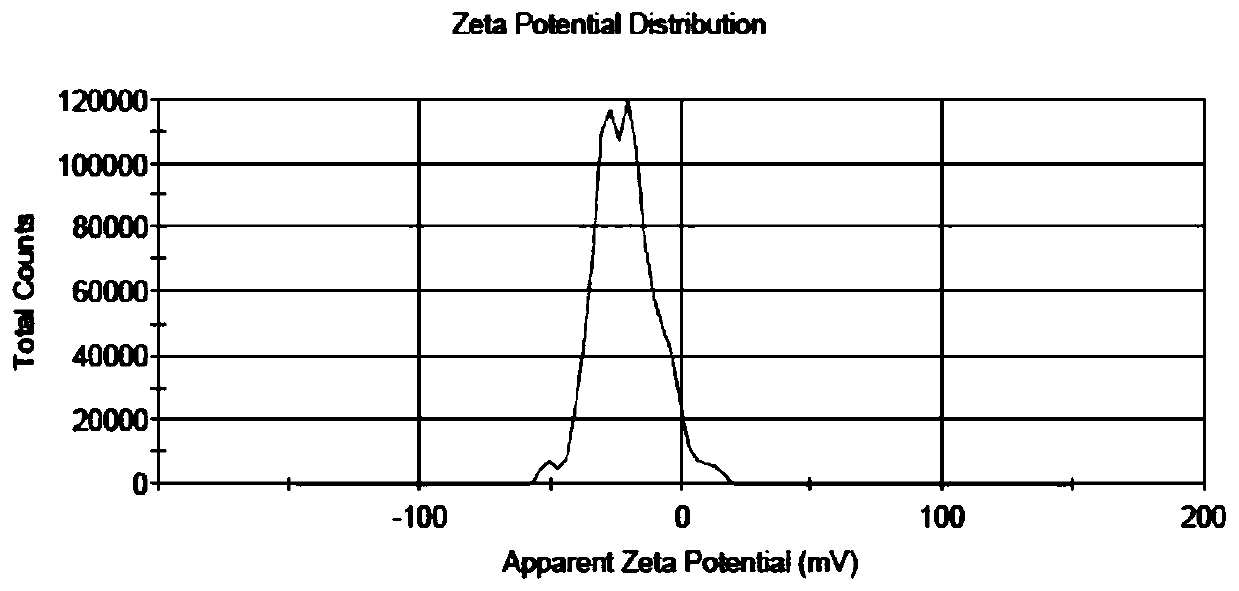Method for preparing double target magnetic nanoparticle of liver cancer
A magnetic nanoparticle, dual-targeting technology, applied in the field of nanomaterial manufacturing, can solve the problems of suboptimal, low surgical resection rate, low survival rate, etc., and achieve the effect of great clinical application prospects.
- Summary
- Abstract
- Description
- Claims
- Application Information
AI Technical Summary
Problems solved by technology
Method used
Image
Examples
Embodiment 1
[0036] Example 1: Preparation of liver cancer dual targeting magnetic nanoparticles
[0037] 1. Preparation of superparamagnetic nanoparticles (SPIO) (high temperature pyrolysis method):
[0038] Add 2mmol of iron acetylacetonate (Fe(acac)3) into a 200mL inclined three-neck flask, continue to add 20mL of dibenzyl ether, and then add oleic acid (6mmol) and oleylamine (6mmol) successively. Under the protection of nitrogen atmosphere, the mixture was heated to 200° C., and reacted at this temperature for 60 minutes, and then heated to 280° C., and reacted at this temperature for 30 minutes. After interrupting heating and cooling to room temperature, add 40ml of ethanol for magnetic separation and washing, repeat several times to remove residual dibenzyl ether, oleic acid and oleylamine in the system, and finally prepare oleic acid-modified magnetic Fe 3 o 4 Nanoparticles, which were stored in n-hexane solution, and its scanning electron microscope pictures can be found in figu...
Embodiment 2
[0043] Example 2: MR analysis of different concentrations of PEGylated magnetic nanoparticles cross-linked double antibody and PEGylated magnetic nanoparticles, the preparation method is the same as that of Example 1.
[0044] The concentrations of Fe were 0.00625, 0.0125, 0.025, 0.05, and 0.1 mM, respectively. The result is as Figure 7 shown. From Figure 7 It can be seen that as the concentration of SPIO-PEG and SPIO-PEG-BsAb increased, the T2 signal of both decreased significantly, indicating that the sensitivity of MR imaging was not reduced after SPIO-PEG was linked with double antibodies.
[0045] MR analysis (T2 value) of different concentrations of PEGylated magnetic nanoparticles Figure 8 ,From Figure 8 It can be seen that as the concentration increases, the T2 signal decreases significantly, showing a linear relationship. The linear analysis graph of MR analysis (T2 value) after different concentrations of PEGylated magnetic nanoparticles linked to antibodies...
PUM
 Login to View More
Login to View More Abstract
Description
Claims
Application Information
 Login to View More
Login to View More - R&D
- Intellectual Property
- Life Sciences
- Materials
- Tech Scout
- Unparalleled Data Quality
- Higher Quality Content
- 60% Fewer Hallucinations
Browse by: Latest US Patents, China's latest patents, Technical Efficacy Thesaurus, Application Domain, Technology Topic, Popular Technical Reports.
© 2025 PatSnap. All rights reserved.Legal|Privacy policy|Modern Slavery Act Transparency Statement|Sitemap|About US| Contact US: help@patsnap.com



